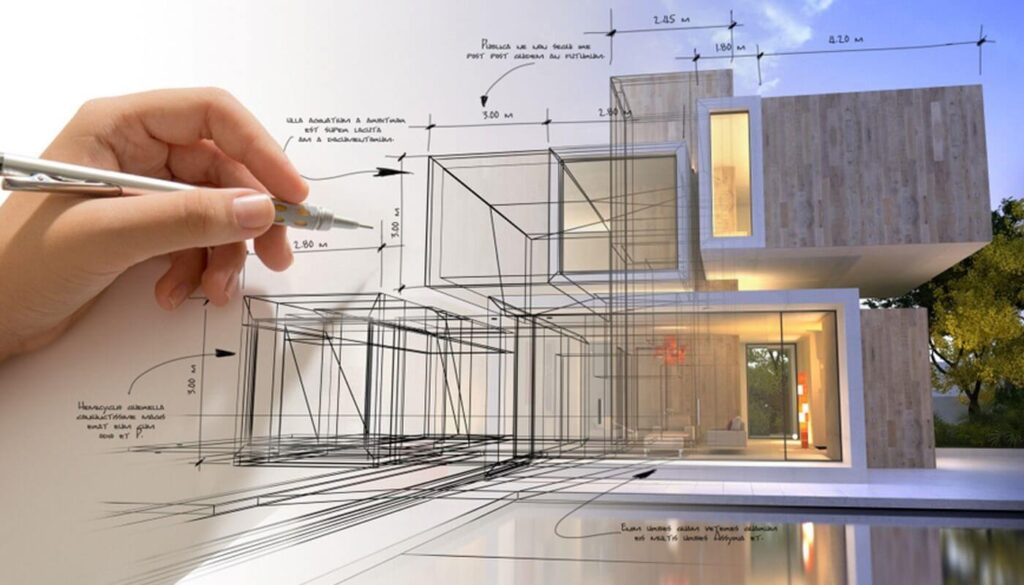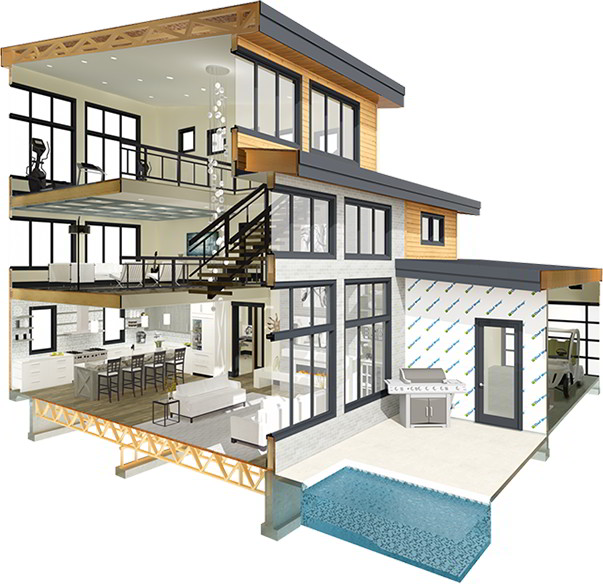Just How CDA Architects Include Eco-Friendly Practices in Architectural Projects
Wiki Article
An Extensive Introduction of Building Styles and Their Impact on Modern City Preparation and Development
Building styles have actually long served as a mirror to the social worths and technological improvements of their time, playing an essential duty fit modern-day city preparation and growth. From the majesty of Neoclassicism to the utilitarian method of Brutalism, each design has actually introduced unique ideas that affect urban appearances and performance. As contemporary obstacles develop, consisting of sustainability and area demands, understanding these historic frameworks ends up being essential. The resulting discussion not just notifies future style practices yet likewise raises important concerns regarding the equilibrium between heritage and development in our evolving city landscapes.Historic Overview of Architectural Styles
Throughout background, architectural styles have actually advanced in response to cultural, technical, and ecological factors. Each duration reflects the prevailing values, ideas, and improvements of its time, leading to a rich tapestry of design that symbolizes human creative thinking and adaptation. The ancient people, such as the Egyptians and Greeks, developed fundamental designs that highlighted proportion and proportion, offering both useful and aesthetic purposes.As societies transitioned with the Center Ages, Gothic architecture arised, defined by its verticality and detailed outlining, matching the spiritual aspirations of the era. The Renaissance marked a resurgence of timeless perfects, merging art and architecture in innovative methods that affected succeeding designs throughout Europe.
The Industrial Revolution presented brand-new materials and building strategies, motivating activities like Modernism, which challenged traditional forms and accepted simplicity and performance. The 20th century saw a diversity of styles, with Postmodernism reacting against the raw minimalism of its predecessor, including historical referrals and eclectic elements.
Today, building styles remain to progress, driven by globalization and sustainability worries, showing a dynamic interplay between heritage and innovation. This historic review highlights the value of architecture as a mirror of societal evolution and as a driver for city growth.
Secret Architectural Styles Explained
The variety of architectural styles mirrors the myriad impacts that form our developed environment, each personifying distinctive characteristics and social importances. Trick building styles include Timeless, Gothic, Baroque, Innovation, and Postmodernism, each representing special historical contexts and aesthetic viewpoints.Classical style, rooted in old Greece and Rome, emphasizes balance, proportion, and making use of columns. On the other hand, Gothic design, thriving in the center Ages, is defined by sharp arches, ribbed safes, and flying buttresses, developing an aerial high quality in cathedrals. Baroque design, arising in the 17th century, is marked by grandeur, sophisticated decoration, and a dynamic interaction of light and shadow.

Understanding these styles gives insight right into the cultural narratives and technical advancements of their respective eras, highlighting just how design offers not equally as a sanctuary, but as a representation of societal worths and aspirations.
Effect On Urban Planning
In forming the advancement of cities, architectural designs substantially influence urban preparation decisions. The option of architectural design usually determines the appearances, functionality, and overall character of metropolitan settings.In addition, building designs can impact zoning policies and land make use of policies. Urban organizers need to think about the prevailing architectural fads when developing districts, guaranteeing that brand-new growths harmonize with existing structures. This consideration promotes natural city landscapes and enhances community identity.
The implementation of certain building designs can likewise influence socioeconomic factors within a city. As an example, premium contemporary styles might attract upscale residents and services, resulting in gentrification, while a lot more inexpensive real estate solutions might focus on practical and lasting designs to accommodate varied populaces. Ultimately, the interaction between architectural styles and urban planning creates dynamic cities that mirror both historic context and this article modern requirements, forming the lived experiences of their occupants.
Sustainability and Modern Architecture
Building styles play a crucial function in resolving modern difficulties, specifically in the realm of sustainability. As metropolitan locations expand and environmental worries magnify, modern design progressively embraces lasting layout concepts that prioritize power effectiveness, source conservation, and marginal environmental impact.Contemporary architectural activities, such as biophilic layout and eco-friendly architecture, advocate for structures that harmonize with their environments, making use of all-natural materials and promoting biodiversity - cda architects. These designs often include eco-friendly energy resources, such as solar panels and wind turbines, to reduce reliance on fossil gas and lower carbon impacts
In addition, the combination of sophisticated modern technologies, such as smart structure systems, enhances energy administration, maximizing source usage while making certain occupant convenience. Innovative water administration techniques, consisting of rain harvesting and greywater recycling, more add to sustainable urban atmospheres.
Notably, sustainability extends beyond environmental concerns; it encompasses social and financial measurements. By fostering community well-being and advertising inclusivity, modern architectural styles line up with sustainable advancement goals. As a result, the advancement of architectural techniques remains to form durable cities that not only fulfill the demands of the existing but likewise guard the future for generations to find.
Neighborhood Interaction in Design
Neighborhood engagement in style functions as a critical bridge between designers and the populaces they serve, ensuring that the developed environment shows the needs and desires of its customers. This joint procedure welcomes neighborhood participants to contribute their understandings and choices, cultivating a sense of ownership and duty toward the areas they live in.Reliable area involvement utilizes various methods, such as workshops, surveys, and public online forums, to gather diverse point of views (cda architects). These methods promote a two-way discussion, allowing architects to recognize neighborhood contexts while encouraging homeowners to articulate their worries and needs. This inclusivity not only boosts the design high quality but additionally promotes social equity by addressing the one-of-a-kind challenges dealt with by marginalized teams

Final Thought
Architectural styles have actually exceptionally affected contemporary city preparation and development, showing evolving social and technological contexts. click here for more The integration of historic appearances with modern requirements promotes urban settings that prioritize sustainability and neighborhood involvement. As cities proceed to expand and adjust, the ongoing discussion in between architectural heritage and contemporary style concepts will certainly remain crucial in producing comprehensive, dynamic areas that boost lifestyle and promote social equity. The future of metropolitan development rest on this unified balance.Report this wiki page